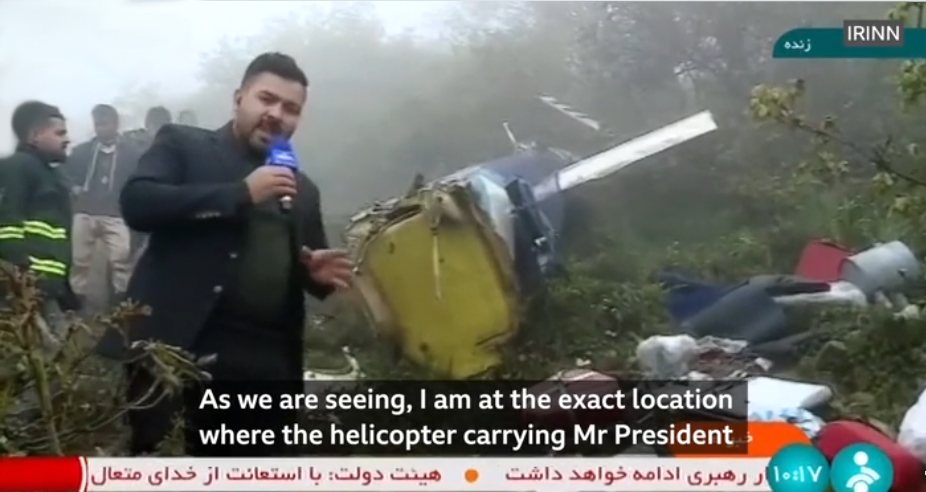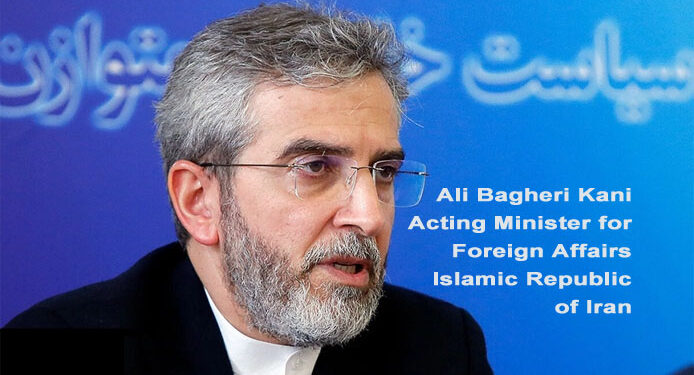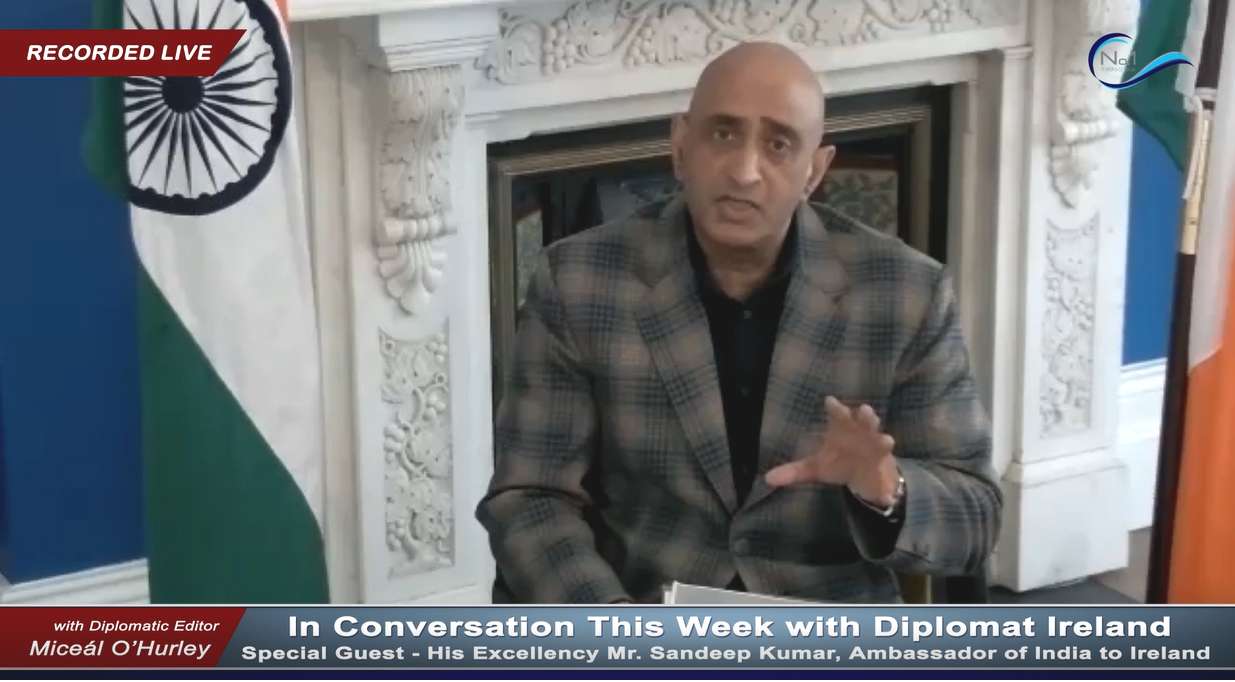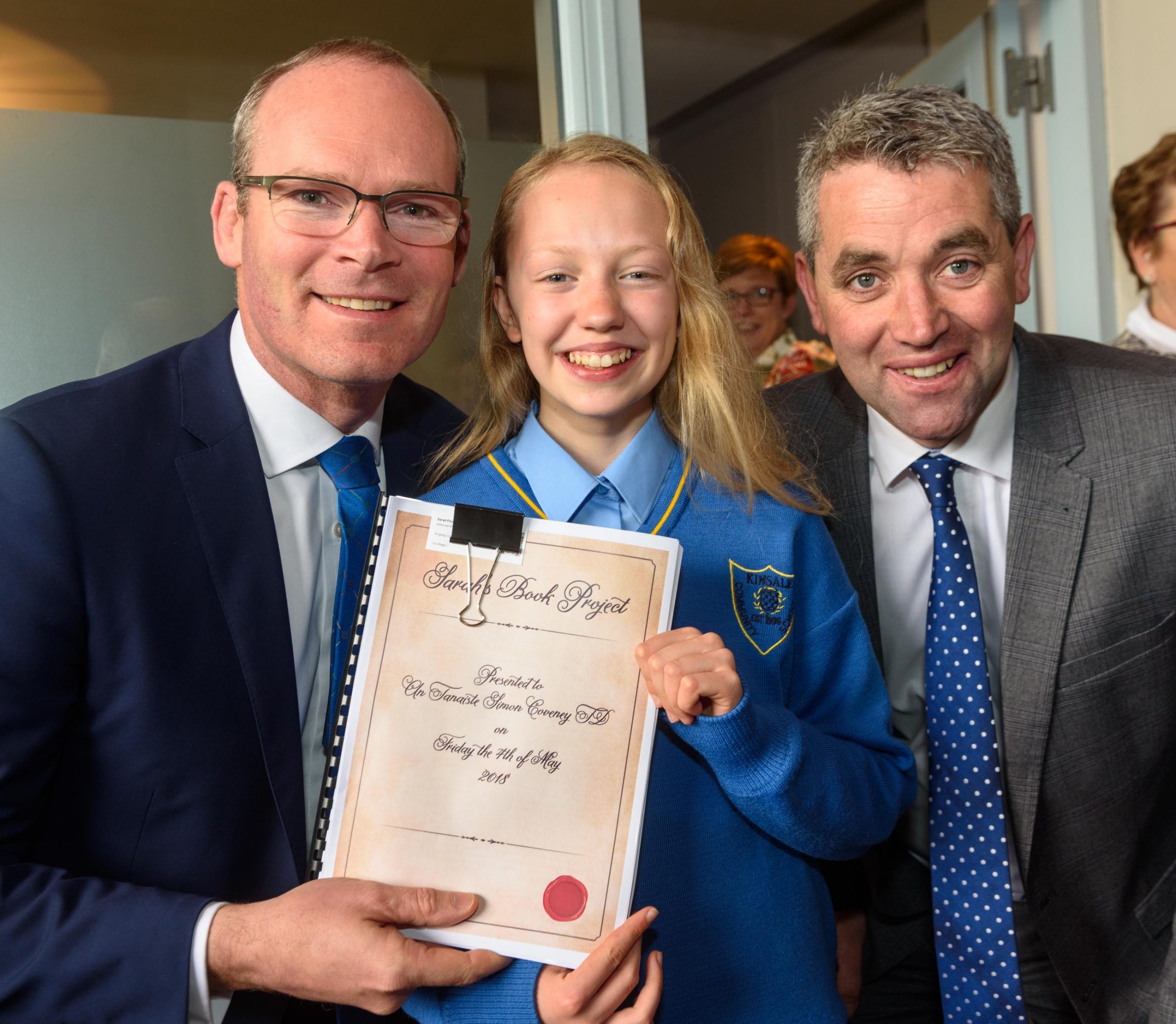by Miceál O’Hurley
TEHRAN — The Islamic Republic of Iran’s President, Ebrahim Raisi and Foreign Minister Hossein Amir-Abdollahian have been confirmed dead after following their helicopter having failed to arrive at its destination. Early, contradictory reports that the crew and passengers survived the crash proved incorrect. The latest reports from State media outlets indicate the crash had no survivors. Earlier reports cited claims the crash was “not serious” and there had been cellular phone contact with a passenger and member of the flight crew. In all, at least 8-persons are reported to have died in the crash located in a mountainous region North, Northeast of Tabriz. Some reports indicate 10-persons perished in the crash. This is a developing story.

No cause was given for the crash. There was some speculation of foreign interference circulating, however, given the age of Iran’s aircraft and the challenges of maintaining them given parts unavailability under sanctions, Occam’s Razor would tend towards catastrophic mechanical failure or pilot error being the most probable causes for the crash. Weather conditions were challenging at the time of the crash with heavy fog, dropping temperatures and operations in a mountainous region as dusk fell. A full crash investigation will no doubt follow.
Regional governments including Türkiye, Armenia, Azerbaijan and Russia offered the assistance of air-rescue assets. The EU offered emergency satellite mapping technology to help Iran with the search and rescue efforts. Condolences and expressions of sympathy issued from Iran’s partners and even several adversaries including Qatar and Saudi Arabia.
Iran’s Grand Ayatollah and Supreme Leader, Seyyed Ali Hosseini Khamenei, called for a period of mourning, “I announce five days of public mourning and offer my condolences to the dear people of Iran,” according to a statement published by the official State news agency IRNA. “[Vice President Mohammad] Mokhber will manage the executive branch and is obliged to arrange with the heads of the legislative and judicial branches to elect a new president within a maximum of 50 days,” the Supreme Leader added.

Prior to the crash, Raisi had widely been considered a top-contender to replace 85-year old Supreme Leader Ali Khamenei upon his resignation, incapacity or death. A hardliner and conservative, Raisi had been elected to the Presidency in August 2021 amongst historically low voter turnout. Unlike his predecessor, Hassan Rouhani, whose positions were noted to be far more moderate, Raisi forged a close and active relationship with Supreme Leader Ali Khamenei. Social unrest have marked the Presidency under Raisi.
Reportedly accompanying Raisi and Abdollahian on the ill-fated flight were:
- Malik Rahmati, governor of Iran’s East Azerbaijan Province;
- Ayatollah Mohammad Ali Al-Hashem, Representative of the Iranian Supreme Leader to East Azerbaijan;
- Sardar Seyed Mehdi Mousavi, Head of Raisi’s protection detail;
- Colonel Seyed Taher Mostafavi, Pilot;
- Colonel Mohsen Daryanush, Co-Pilot; and,
- Major Behrouz Ghadimi, Flight Technician
First Vice President to Assume Presidential Duties – Election to Follow
Iran’s First Vice President, Mohomed Mokhber automatically assumes the office of the Presidency under Article 131 of the Constitution of the Islamic Republic of Iran (1989). The Constitution provides that an election must take place within 50-days of the First Vice President assuming office. All elections, however, are subject to the authority and concurrence of the Supreme Leader who must confirm the election to office.
Mokhber, although of a lesser profile than Raisi, is not expected to shift the policy of the Government. However, in the aftermath of recent elections to the Parliamentary Assembly, any confirmation of office for Mokhber by election may consolidate the hardliners position of authority in all branches of Government, elected and religious.
"Mokhber will manage the executive branch and is obliged to arrange with the heads of the legislative and judicial branches to elect a new president within a maximum of 50 days" - Supreme Leader Ali Khamenei
Iran has been careful to express and reinforce the message of the Constitutional continuity of authority and power in an attempt to reassure Iranian citizens. Prior to the crash site being reached the Supreme Leader used ‘X’ (formerly known as Twitter) to release a message, “the Iranian people should not worry, there will be no disruption in the country’s affairs.”
Some videos purporting to show fireworks being launched over Tehran upon the news of the crash and the possibility of Raisi’s death appeared on several social media channels normally linked with opposition figures and movements. None can be verified at this time.
The recent Assembly elections at the end of February experienced record-low turnout reflecting public alienation. The absence of opposition at the polls has allowed hardliners and conservatives to reinforce their position in Government to the detriment of opposition voices.
The electorate which largely stayed away from the polls in the last 2-election cycles have expressed growing disenchantment with their Government. With inflation reaching 40%, the ‘morality police’ cracking-down on hajib laws requiring women to dress modestly and cover their heads appropriately, and a more stringent approach to suppressing civil unrest, Iran’s Government, which once boasted robust election participation that set itself apart from others in the region may look to encourage greater participation in the upcoming Presidential elections to bolster its legitimacy. Even within hardliners and conservatives in Iran there is no unipolar or monolithic approach to Governance and pragmatists may see an opportunity to advance the candidacy of one of their own.
Interim Minister for Foreign Affairs
The death of Foreign Affairs Minister Abdollahian comes at an inopportune time for Iran. The Israeli War on Hamas has galvanized the region and provided Iran an outsized platform on an issue of concern for most regional powers and people. However, Abdollahian was not consider a driver or principal architect of Iran’s foreign policy and was perceived as a functionary carrying out the policies of the country’s religious leaders. Consequently, it is unlikely that Iran’s foreign policy will be greatly impacted no matter who emerges as the next Minister for Foreign Affairs.
According to State television, a well-known and able diplomat, Ali Bagheri Kani, who previously served as a nuclear negotiator for Iran, has been appointed the Acting Minister for Foreign Affairs. He previously served as Deputy Secretary of Iran’s Supreme National Security Council between 2007- 2013. He remained an advisor to the National Security Council before assuming the duties as Acting Minister for Foreign Affairs. Having served in Iran’s diplomatic corps since 1990, Kani was widely praised for his skill in reaching an accord between Iran and the United States that resulted in the JCPOA nuclear deal. Most recently he has been an active architect and negotiator in what became the September 2023 prisoner release deal which saw 5-Americans held by Iran to be released in exchange for Iranian prisoners and approximately $6 billion in frozen Iranian oil assets in South Korea being released to Tehran.
The September 2023 prisoner release deal was highly praised by the Iranian public and its allies for obtaining concessions from the United States. Republican Members of Congress and former President Donald Trump has sharply criticised the Biden Administration for “capitulating” to Iranian interests.
The appointment of such a deft negotiator as Kani has proven himself to be may bolster Tehran’s efforts to soften sanctions and elevate Iran’s role in resolving the crisis in Gaza.
















































